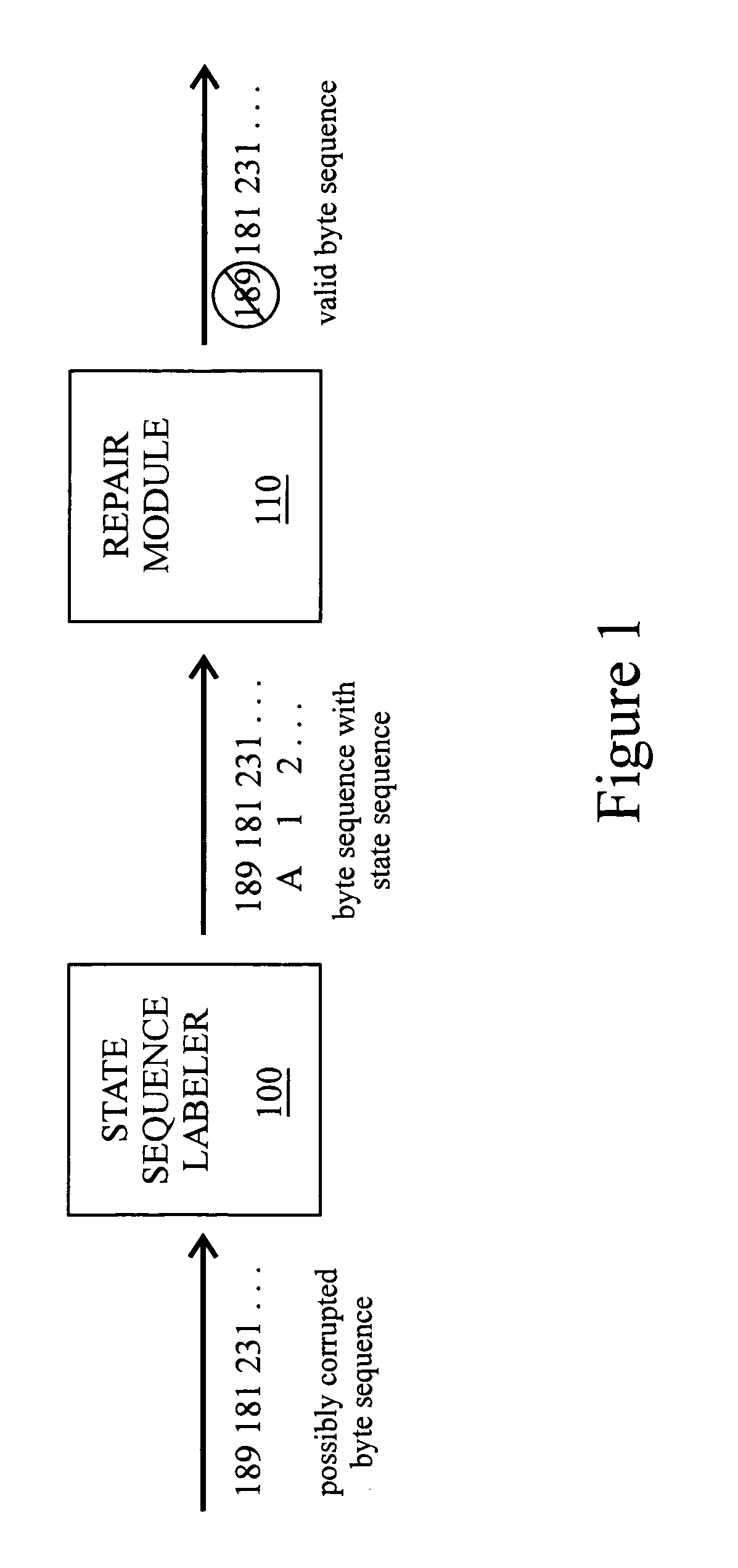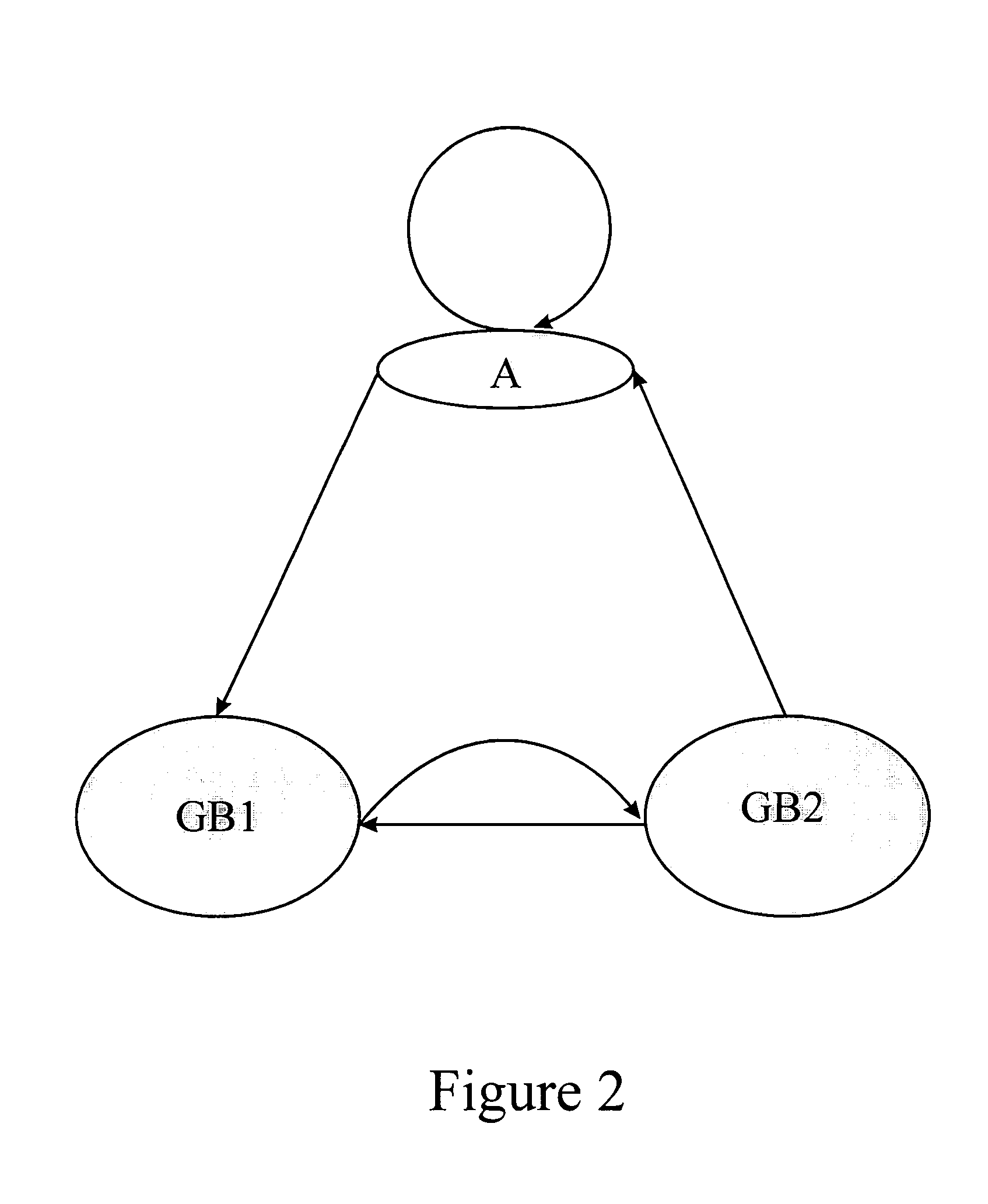Noise removal in multibyte text encodings using statistical models
a statistical model and multi-byte text technology, applied in the field of character code sequence validation, can solve the problems of ambiguity in repairing such noise, loss of all information following the noise, and insufficient application of double-byte encoding processing currently available,
- Summary
- Abstract
- Description
- Claims
- Application Information
AI Technical Summary
Benefits of technology
Problems solved by technology
Method used
Image
Examples
Embodiment Construction
[0026]Referring to FIG. 1 there is depicted the basic flow of the invention wherein a possibly corrupted byte sequence is passed to a state sequence labeler 100 that first generates a most probable state sequence to the byte sequence and then modifies the state sequence so as to localize all of the errors, or “noise”, into a single state. The byte sequence and the associated state sequence are then passed to a repair module 110 that examines the sequences to determine if there exists any errors in the byte sequence and, if so, corrects them, thereby outputting a valid byte sequence.
[0027]FIG. 2 depicts a typical Markov model for allowable state sequences for mixed double-byte and ASCII sequences, such as GB-type byte sequences. The state of a byte in this example can be one of three, namely an ASCII character (state A), a first byte of a two-byte character state (state GB1), or a second byte of a two-byte character state (state GB2). The states are designated by the user, dependent ...
PUM
 Login to View More
Login to View More Abstract
Description
Claims
Application Information
 Login to View More
Login to View More - R&D
- Intellectual Property
- Life Sciences
- Materials
- Tech Scout
- Unparalleled Data Quality
- Higher Quality Content
- 60% Fewer Hallucinations
Browse by: Latest US Patents, China's latest patents, Technical Efficacy Thesaurus, Application Domain, Technology Topic, Popular Technical Reports.
© 2025 PatSnap. All rights reserved.Legal|Privacy policy|Modern Slavery Act Transparency Statement|Sitemap|About US| Contact US: help@patsnap.com



